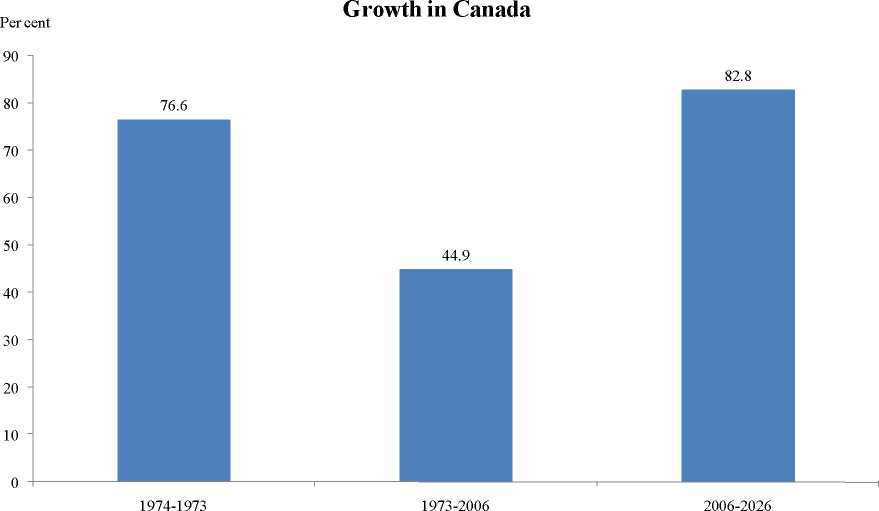10
The term productivity can refer to both the level of productivity and the
productivity growth rate, that is the per cent change in levels. Productivity growth rates,
which are the focus of attention of economists, must be based in constant price measures
of output and productivity that take account of price increases in the value of output in
order to capture increases in the physical or real amount of output produced per hour
worked. On the other hand, productivity levels, which are of particular interest to
business analysts, are expressed in current price terms and reflect the current structure of
relative prices.4 Productivity growth rates and trends in current price productivity levels
may in fact move in opposite directions. For example, increased oil prices have raised the
current dollar value of output per hour produced by the oil and gas industry, but may
actually lower productivity growth as more marginal deposits requiring more labour input
per barrel of oil become profitable and are exploited.
B. Contribution of Productivity to Economic Growth, Living Standards, and Well-
being
1) Productivity and Economic Growth
Chart 1: Contribution of Labour Productivity to Economic (GDP)

Source: Table 2.
4 It is interesting to note that industries with high productivity growth rates are not necessarily the ones with
high productivity levels just as industries with low productivity growth rate do not necessarily have low
productivity levels. This is because of changes in relative prices. Ironically, the sector that currently has the
lowest current dollar value added per hour worked in the economy is agriculture. Yet this is the industry
with the fastest labour productivity growth over the last half century! What has happened is that through
competition, the robust productivity gains in agriculture have been passed on to consumers in the form of
lower food prices, not to the producers in the form of higher wages and returns to capital.
More intriguing information
1. A Hybrid Neural Network and Virtual Reality System for Spatial Language Processing2. The name is absent
3. The name is absent
4. Stable Distributions
5. The name is absent
6. Optimal Private and Public Harvesting under Spatial and Temporal Interdependence
7. Benefits of travel time savings for freight transportation : beyond the costs
8. Does South Africa Have the Potential and Capacity to Grow at 7 Per Cent?: A Labour Market Perspective
9. Policy Formulation, Implementation and Feedback in EU Merger Control
10. Locke's theory of perception